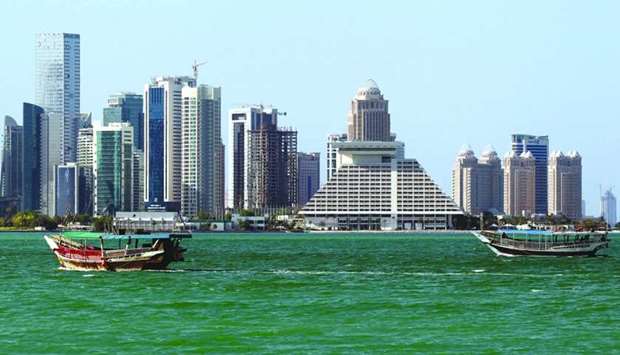Qatar’s sovereign assets totalling more than 100% of GDP are expected to remain “solid” until 2021, premier rating agency S&P Global said Monday.
Qatar is among the seven sovereigns whose assets exceed 100% of GDP and rated by S&P. The others are Kuwait, Norway, Abu Dhabi, Singapore, Jersey and Guernsey.
Combined, the seven sovereigns have accumulated $3tn in assets (200% of GDP on average) to date, it said.
Such assets, which are typically managed by sovereign wealth funds, represent the largest component of S&P estimates. The majority of these assets are invested externally.
The average rating on the seven sovereigns is 'AA', compared with an average of 'BBB-' on all sovereigns S&P rate globally.
S&P said it “expects little change in the ranking of the seven sovereigns with assets totalling more than 100% of GDP through our current forecast horizon to 2021.
“We also expect that the current seven's average assets-to-GDP ratio will remain solid, at around 200% of GDP,” S&P said.
No region illustrates the differing support that liquid assets can provide to a sovereign rating better than the Gulf Co-operation Council (GCC) it said.
All GCC members are among the 22 sovereigns with liquid assets exceeding 25% of GDP, and three of them have liquid assets worth more than 100% of GDP.
S&P estimates that the nominal value of overall GCC government liquid assets fell by roughly $90bn in 2015, although Qatar, Kuwait, Abu Dhabi, and, at that time, Saudi Arabia's liquid-assets-to-GDP ratios stayed well above 100%.
The decline, it said was mainly because governments used their assets, or the investment returns they generated, to finance fiscal deficits caused by the drop in oil prices.
S&P expects Qatar, Kuwait and Abu Dhabi to maintain liquid assets above 100% of GDP.
Excluding Kuwait, it expects the average liquid-asset-to-GDP ratio for all GCC members will remain flat at about 110% of GDP until 2021, and that Bahrain will drop out of the peer group.
However, on average, it expects the ratios will decline by about 8% (or 14% of GDP) in 2018 versus 2017.
Key to the deterioration this year is a strong denominator effect; S&P expects GDP to recover faster than asset growth, in line with its oil price assumptions for 2018, and as continued government spending maintains fiscal deficits but boosts economic activity. When an economy relies heavily on oil, nominal GDP plummets alongside oil prices (all other factors remaining unchanged), as they did in 2014.
This leads to an increase in the ratio of general government assets to GDP despite a nominal decline in assets, it said.
What S&P considers part of a sovereign's stock of liquid financial assets comprises government deposits in financial institutions (unless these are supporting those institutions), including central banks; minority arms-length holdings of incorporated enterprises that are widely traded; and the balances of defined-benefit government-run pension plans or social security funds held in bank deposits and widely traded securities.
S&P said it generally does not consider central bank reserves to be part of government liquid assets.
"When general government external assets are sufficiently large, we believe that the sovereign will be able to utilise a significant portion of them to support its creditworthiness and prevent a default in the event of financial stress.
“We typically consider all of a sovereign's external general government assets to be liquid if the amount exceeds 100% of GDP when calculating our net general government debt and narrow net external debt ratios; we believe that the sovereign will be able to utilise a significant portion of its assets in the event of financial distress to support its creditworthiness,” S&P said.




